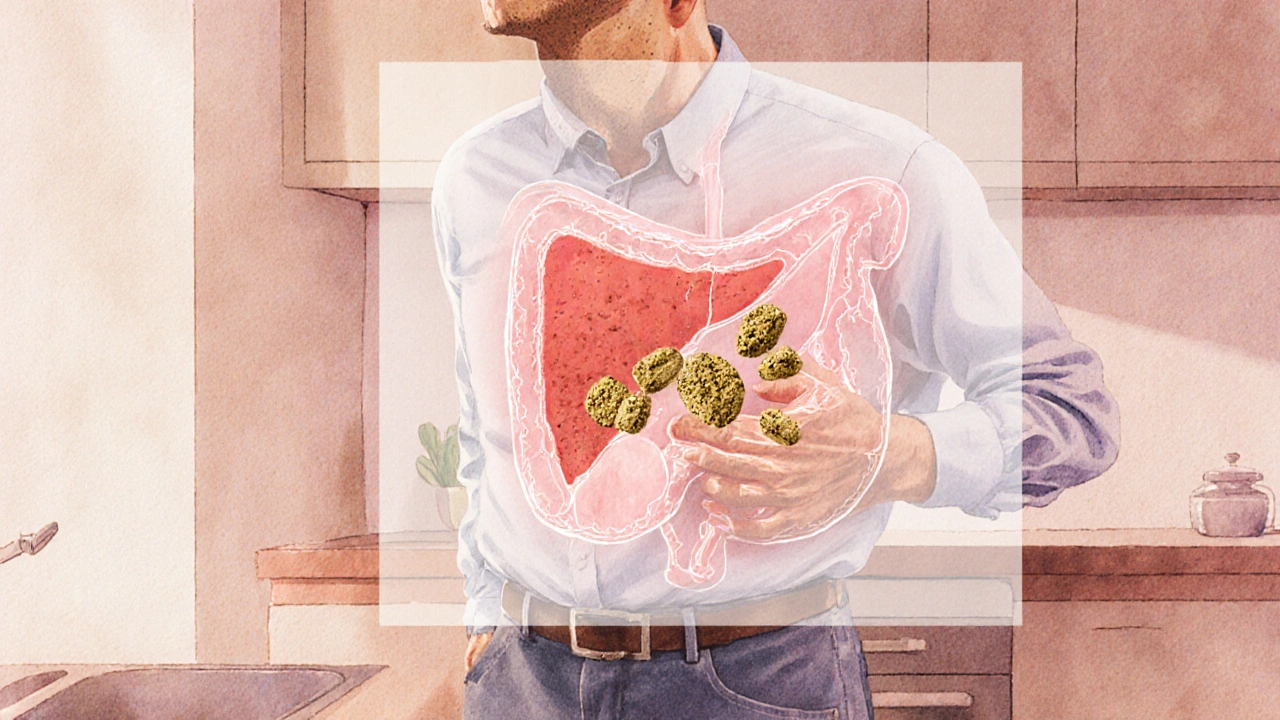When dealing with epigastric pain, a burning or aching discomfort located in the upper central abdomen, just below the sternum. Also known as upper abdominal pain, it often signals issues in the stomach, duodenum, or pancreas. A common companion is functional dyspepsia, indigestion without an obvious cause, producing bloating and early satiety, and another red flag is pancreatic duct blockage, obstruction that hampers enzyme flow and can trigger upper abdominal discomfort. Recognizing these connections helps you pinpoint why the discomfort shows up and what to address first.
Most people notice that epigastric pain flares after a big, greasy meal or when they’ve been taking non‑steroidal anti‑inflammatory drugs (NSAIDs) for weeks. NSAIDs can irritate the stomach lining, leading to ulcer‑like pain that settles in the same spot. Acid reflux is another frequent culprit; the backward flow of stomach acid can cause a sharp, burning feeling right under the breastbone. If you’ve recently started a new medication or increased the dose of an existing one, consider it as a possible trigger.
Diet plays a surprisingly big role. Low‑fiber meals tend to slow gastric emptying, which can worsen functional dyspepsia and keep that uneasy pressure lingering. Adding soluble fiber—think oats, apples, or psyllium—helps move food through the gut more smoothly, often easing the ache within a few days. On the flip side, too much insoluble fiber from raw veggies or whole‑grain breads can cause bloating, so balance is key.
Stress and irregular eating patterns also feed the cycle. Skipping breakfast or eating late at night leaves the stomach empty for long periods, raising acid levels and sensitizing nerve endings. A simple habit change—small, regular meals and a brief post‑meal walk—can lower the frequency of episodes dramatically.
When the pain is sharp, radiates to the back, or comes with nausea, vomiting, or yellow‑tinted skin, think about pancreatic issues. A blocked pancreatic duct can cause the same upper‑central discomfort but often adds a deep, constant ache that doesn’t improve with antacids. In such cases, medical imaging is the only way to confirm the problem.
Besides lifestyle tweaks, over‑the‑counter options like antacids, H2 blockers, or proton‑pump inhibitors (PPIs) can provide quick relief if acid is the main driver. However, long‑term use of PPIs without a doctor’s guidance may mask underlying conditions such as an ulcer or a hidden infection.
In summary, the best strategy is a layered approach: identify possible triggers (NSAIDs, acid reflux, diet), adjust habits (add fiber, eat regularly, manage stress), and keep an eye on warning signs that need professional evaluation. Below you’ll find a curated set of articles that dive deeper into each of these angles, from fiber’s role in functional dyspepsia to detailed comparisons of pain‑relief meds, giving you actionable insight to tackle epigastric pain head‑on.

Learn how gallstones cause epigastric pain, how doctors diagnose it, treatment options from medication to surgery, and lifestyle steps to prevent future stones.